written by:
Ornatus Mundi
published:
2021-08-21
categories:
accessories, bespoke, collectors, Girard-Perregaux, watches
The value of passionate spending: a fully bespoke strap from Heima Leathers (& interview with founder!)
True luxury might not cost a lot of money and might even come form unsuspected places (Indonesia here), but it requires taste, a bit of imagination, but the result is deeply satisfying – if you work with the right people! 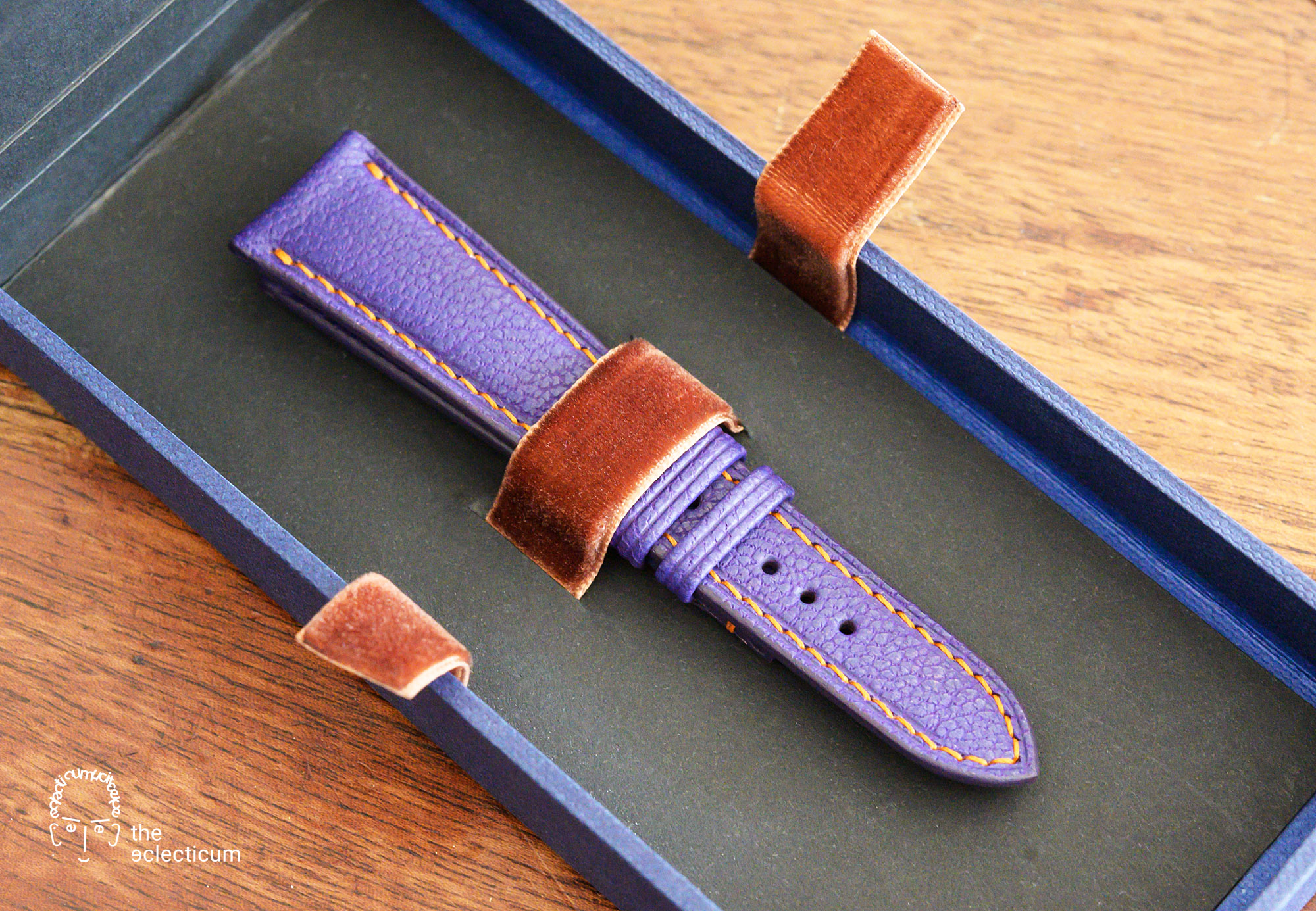
The idea:
My girlfriend has a certain affection for watches as well (note: ‘certain’, lol!), and has a small collection of her own, including above Girard-Perregaux Classique Elegance Ref. 90500, a lovely 34mm watch with manufacture movement. The original factory strap was slowly reaching the end of its useful life, and I thought I’d made the replacement a personal gift – bespoke! 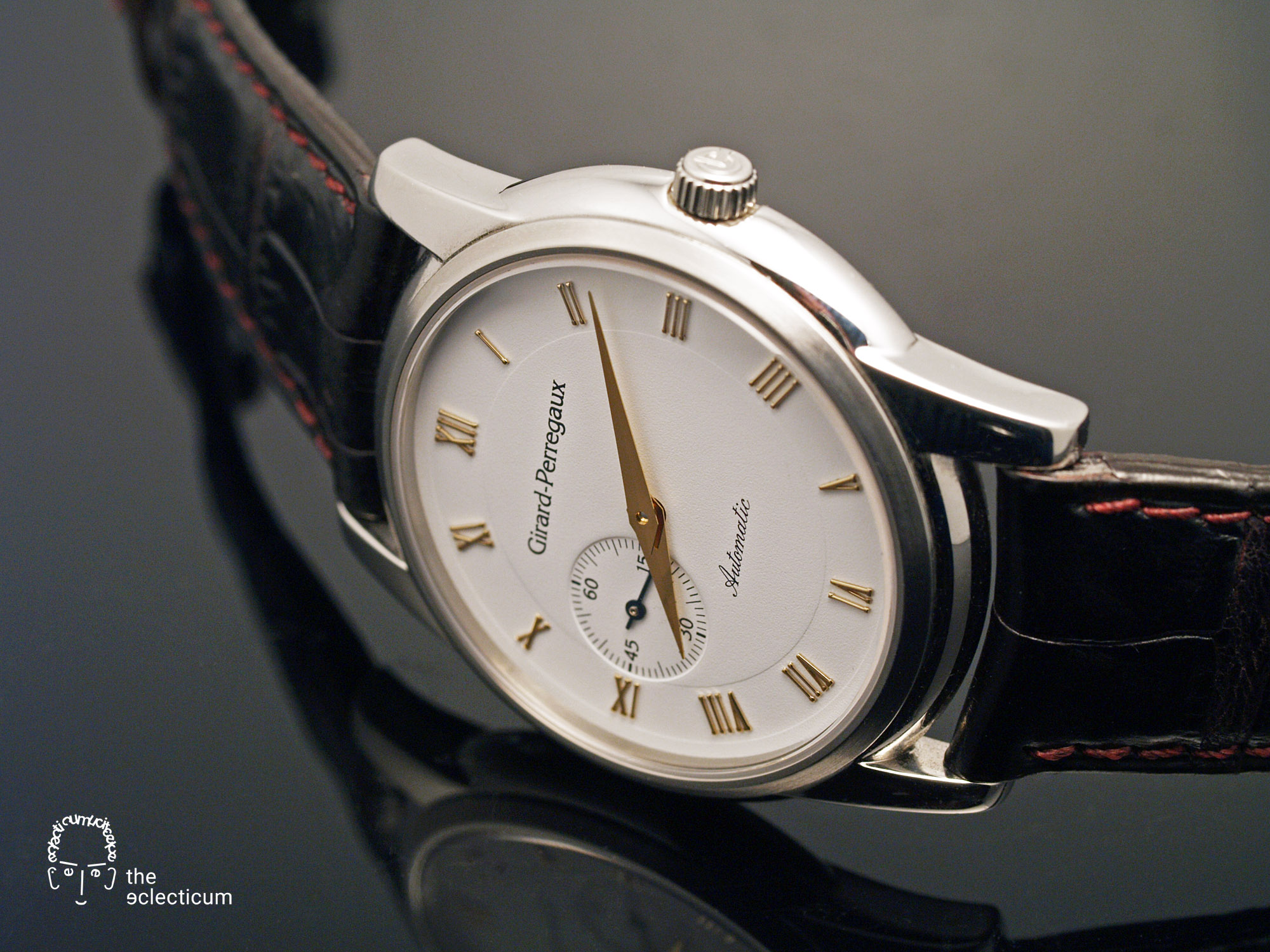 (The Girard-Perregaux Classique Elegance Ref. 90500, still on the factory strap)
(The Girard-Perregaux Classique Elegance Ref. 90500, still on the factory strap)
I shall afford a few words on what to expect when you want to go your own strap route: first, you have a lot of options, from the well-known exclusive ateliers like APB or Jean Rousseau, to numerous specialised strap makers. Your freedoms to specify range from leather and colour choices up to having a completely individual strap, made like a bespoke pair of shoes ‘to your last’. There are many grades of differentiation in between, and different types of services, from ‘customiser’ webtools to good old unstructured email exchanges.
I finally opted for Heima Leathers, an atelier which does not even have a website, and on top is based in Indonesia – am I crazy (also, this was my first bespoke…)?
Side note: Since Heima is not known to most of our readers, I conducted a short interview with Erwin:
TEC: how did you decide to establish a bespoke leather workshop?
HEIMA: Personally, it has always been my dream to work in the creative industry. After college, I was trying to decide on my career path and find the right medium to express my passion for art & crafts. Then in early 2014, I was introduced to leathercrafting when I was looking for a new wallet for myself. At that time, the interest in handmade leather goods in Indonesia was on the rise. And after being unable to find the right wallet, one of my close friends suggested I create one instead.
So, I searched for the basic information in some forums as well as leathercrafting videos on YouTube. The more I know about the process, the more I felt intrigued by it. Subsequently, I was determined to learn thoroughly about the art, though with limited tools and material. During that process, I found a lot of very talented leather artisans whose works truly inspired me to eventually developed my own style.
By 2015, I started accepting commission work for card wallets from my friends and posted the result on Instagram, which gained quite a positive response. As I enjoyed the process and the result it brings to my clients, this prompted me to eventually established my workshop and started to build the Heima Leathers brand.
TEC: How many employees do you have?
Heima: Since the very beginning, Heima Leathers is just a two-person team; consisting of me as the leathercrafter and my life-and-business partner, Ann, who helps run everything else aside from crafting. We don’t have any employees yet, but we’re aiming to grow in a couple of years to better cater to our clients’ needs.  (Ann and Erwin from Heima Leathers. Image @ Heima)
(Ann and Erwin from Heima Leathers. Image @ Heima)
TEC: where do you see your main assets?
Heima: We think that our biggest intangible asset would be our skills and character. Because no leathercrafter would have the exact same style as one another, and we try to show our characteristics in every product that we make. Though in terms of skill, we realise we still have so much to learn from other crafters and will continue to do so to keep growing and better serve our clients.
TEC: Are all your products bespoke or do you have something like ‘serial production’?
Heima: Now, we’re still mainly doing bespoke products. We try to focus on the detail and quality of the products as I handmade everything by myself. However, we’re also very open to the idea to create a serial production, especially if we’re lucky enough to collaborate with other artisans/brands to produce a limited series with them.
TEC: You seem to promote your products mainly on IG, is that true?
Heima: Yes, currently Instagram is our only promotion channel. We’re planning to build a website soon to showcase more of our portfolios and make it easier for our clients to order, which hopefully could be done by early next year 🙂
TEC: Where do your clients mainly come from?
Heima: Indonesia is still our biggest market, where around 60% of our clients come from. The second biggest would be other Asian countries such as Hong Kong and Singapore, follows by the UK.
TEC: Do your clients in general have a precise idea what they have in mind, or is there often considerable effort necessary for advising and offering guidance? In what aspects do your clients need advice mostly?
Heima: A lot of our clients usually came to us with a general idea of the design of the products, mostly referring to our previous works on Instagram. Or at the very least, they already know the materials that they want to use then we’d advise them on what models would go well with the material.
The aspects that we advise the most would be in terms of colours (as we do hand-colouring for a broad range of colours) and design (especially for products like wallets and clutches).
Once we discussed on the ideas with the clients, we usually also provide them with the diagram of the design so they can reconfirm the details and have a general expectation on what the products would look like.
TEC: What project are you most proud of?
Heima: We feel proud every time we meet our clients’ expectations. There’s probably not a specific project that we’re most proud of. We have our favourite creations though, which is the handmade grid leather that we developed by ourselves and is our first signature material line.
Furthermore, hand-colouring of our leathers is actually also one of our main assets, as not all leather artisans do it. It allows us to offer our clients a broader range of colours to choose from.
TEC: Was there ever an order you had to reject?
Heima: Yes, unfortunately, there are some orders that we have rejected. Mostly, we reject orders because the designs requested are not in the same line with our works’ style and identity. We tried to show our own characteristics in each of our products and some designs are not compatible with it or outside of our expertise. Another reason we have rejected an order was because the client asked for an exact replica of another brand’s product, which we’re highly opposed to doing.
For more, follow Heima Leathers at @heimaleathers on Instagram!
What matters? Knowledge, passion, and skills, and very little else!
First, I was introduced to Heima by a couple of collector friends who ordered regularly from them, not only straps, but also wallets, bags, and other stuff. I appreciated what they have had made many times over, and I liked what I saw – the style (of course, that did naturally reflect the patron’s taste!), the workmanship, some unusual colour combinations, and the leathers used, and I was assured that they were very responsive, helpful, and accommodating throughout the process.
Exactly what I needed!
What you must know when specifying a strap from scratch is the many, many degrees of freedom you have, and this comes also, logically, with an equal number of pitfalls and chances for wrong decisions: leathers (outside and inside), colour, padding, shape (lug attachment, tapering, end piece), number and position of holes, stitching, and many aspects more. Comes to this that the strap not only has to work, technically, with your watch, but also enhance both the personality of the watch as well as of the owner.
It was therefore imperative to me to have a knowledgeable, passionate artisan to guide me through the process. I could not have been in better hands than with the husband-and-wife team of Erwin and Ann at Heima.
I was warned though that had long lead times…
How to navigate through moving targets – or getting your priorities right!
At the beginning, I made myself a list of criteria from which I wanted to base my selections on:
In terms of the aesthetics, remember that the GP was in stainless steel, with a matte slightly off-white dial, rose golden indices and hands, as well as a blued seconds hand. The original alligator strap had a purple-reddish tone with a contrasting red stitching. I liked this contrast, however I thought I allow more emphasis on the creamy dial which Isabelle to loves with a less bold surface structure.
So, I was contemplating of a strap in a lively feminine colour, e.g., a deep but vivid purple, made from non-exotic hides, but still with a funny and unusual skin structure and contrasting stitching.
In terms of sizing, the old strap was a men’s strap which despite being too long fitted quite well, so I retained the measurements. Also, I wanted to retain the original buckle of the GP, and this automatically defined the tapering – from 18 to 14 mm.
So, I produced a quick drawing of what I thought were the essential details, and sent them to Indonesia:  (Data that matters, I thought…)
(Data that matters, I thought…)
At this point, the experience of the artisan and their passion to satisfy their clients comes into play. Remember, we’re talking about bespoke, meaning the strap should fit ‘like a second skin’ to the wearer.
Sizing – and where to place the pin holes?
Each individual wrist has a different shape, its unique combination of circumference, reduction, and transverse profile. Then there is the watch diameter, the distance between case and pin holes in the lugs, and the shape of the buckle – all the above feed into considerations for the length and the hole positions of a bespoke strap. If done correct, technically a single hole should suffice.
In this case, we agreed to use the very comfortable position of the factory strap holes, adapted for a shorter strap length, and we also agreed to go with a set of holes as in the seasonal variation of climate here in Austria means that the circumference of the wrist is dynamic, often significantly so during a single day. One hole alone would be limiting, we feared, and I also did not really trust my ideas to fully go with one hole only, to be honest…
The Heima team recalled that I intended to retain the GP buckle, so they quickly asked to check dimensions so that this would fit as well (e.g., cut width for the pin). Also, the strap would retain curved ends of the orginal.
Leather and shaping considerations
Next came the selection of the leather, thickness, and with it padding. I did not want exotic leather (I did not fancy the hassles with CITES, and on ethical grounds I rejected the idea of scarifying animals for just their skin) but aimed for a fine structure, and Heima recommended a few calf and goat leathers with various grain and structure, accompanied with sample images which would provide the effect that I was looking for: spice, but measured. I ended up with Japanese goat:  (Samples of Japanese goat leather, image © Heima)
(Samples of Japanese goat leather, image © Heima)
Ann recommended an edge thickness of 1,5 – 2.0 mm for a relatively slim (8mm) dress watch like the GP, and I agreed. I was also given a lot of options for padding, again with sample images, and it took me some time to come up with a decision. This, after the leather and colour, immensely defined the appearance: flat, square, double, triple, domed, bone, or square with bevels? Heima sent me illustrative photos of straps they made with each of the options, yet my head was a bit spinning, but in the end, I went for 1mm square padding, as this I thought would fit nicely for the relatively flat strap, would expose the structure of the leather well, but in a subtle manner.
Colour scheme: outside, inside, trimmings – like with your car…
What was left to decide, though, was the colour. Now this is a tricky part as there are billions of colours to choose from, and add to this the inherent characteristics of the base leather which impact on the final outcome as well.  (Pantone colour chart excerpt for ‘purple’. Swatch 2607 XGC made the score…)
(Pantone colour chart excerpt for ‘purple’. Swatch 2607 XGC made the score…)
Heima suggested I consult the Pantone colour charts and notify them on a colour code that I liked most, and they would try their best to approximate it. I had the structure of the leather in my mind, and concluded that code 2607 XGC would match my idea best.
To add some spice, I asked for a contrasting bright orange stitching, and a burgundy inner lining (I could have gone full Louboutin red here, but I restrained that thought…).
I think we were there, finally!
Outcome
Heima summarised the specification for me for a final check, and reminded me that I would have to wait for about 2-3 months due to their workload. I knew this, so I was ok with this. We further agreed on a deposit to be paid at order, and that they would provide me with a colour sample well before my strap would be finished.
That colour sample indeed arrived already a few days after I placed the order, and it just made my anticipation go up one level: 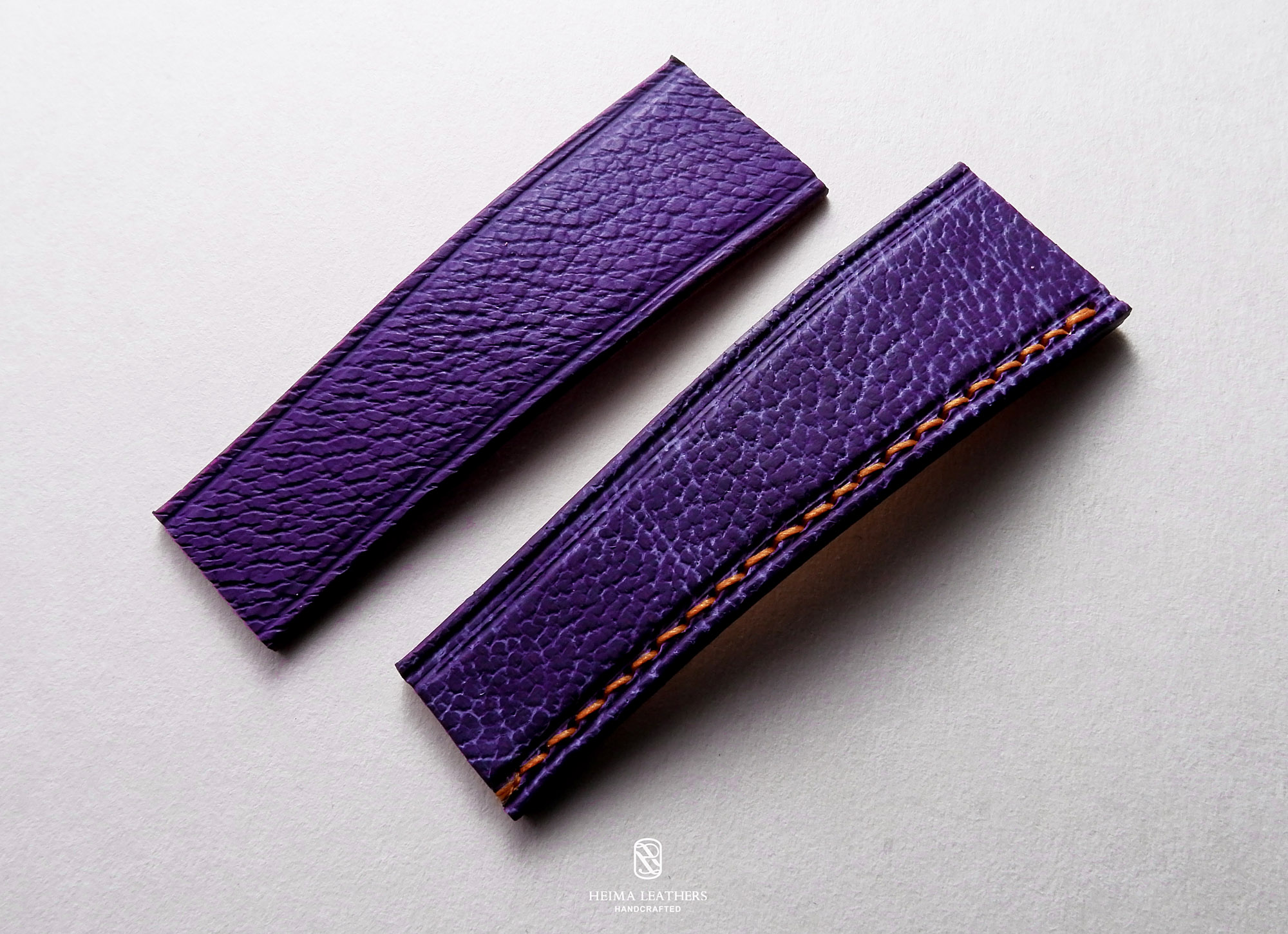 (Leather colour sample. Exactly as I imagined! Image © Heima)
(Leather colour sample. Exactly as I imagined! Image © Heima)
The process could continue.
Fast forward two months, and I got another email notifying me that my strap was ready to be shipped, along with a request to confirm my address. Oh, it’s happening… what I saw was a thing of beauty, and based on the image Ann sent me also the workmanship was up there where expected: 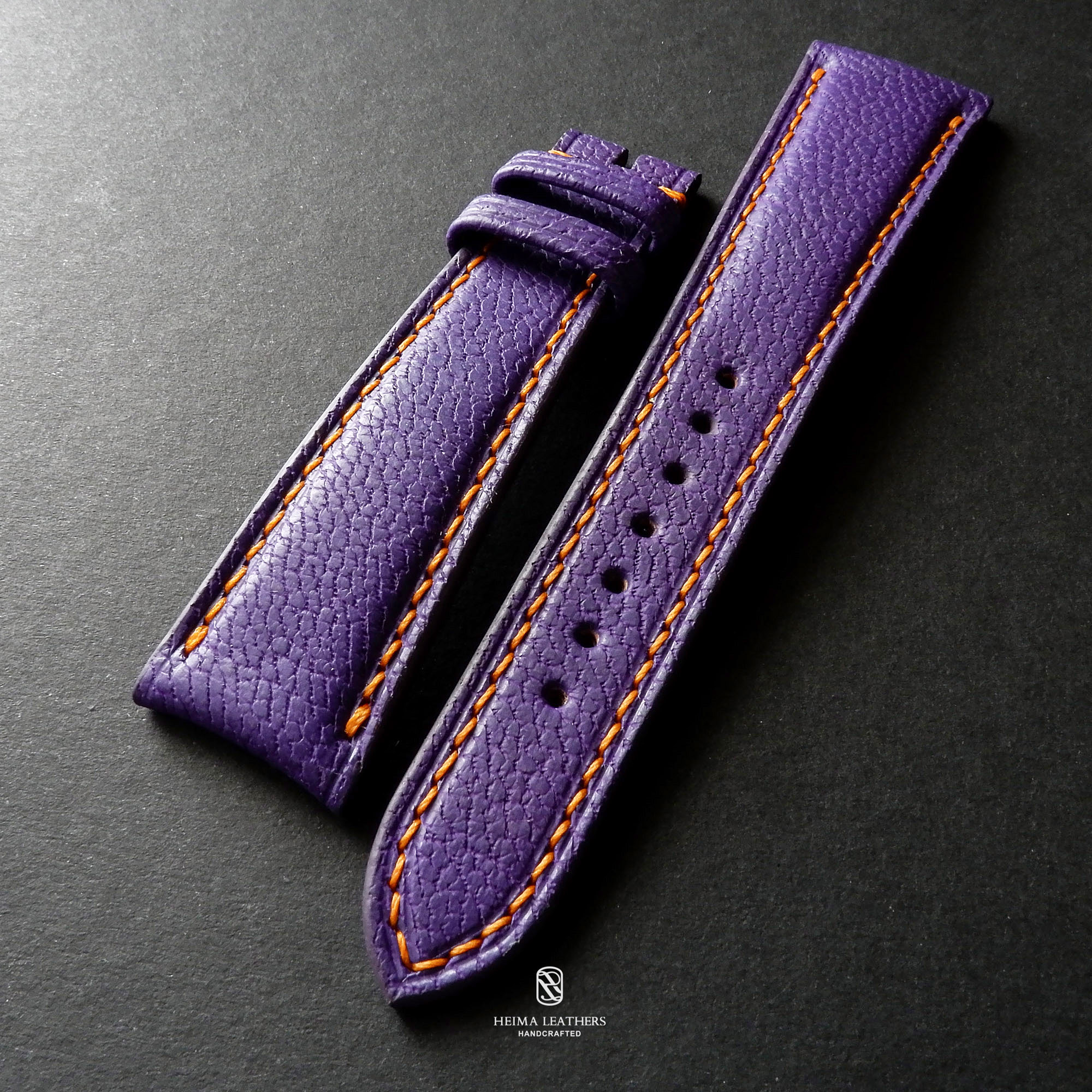 (Driving my anticipation levels up… image © Heima)
(Driving my anticipation levels up… image © Heima)
Two weeks later, a final invoice settled, an EMS envelope arrived from Indonesia. I let the images speak for themselves, and I invite you to also appreciate the care Heima awarded to the packaging alone. Here are passionate people at work!


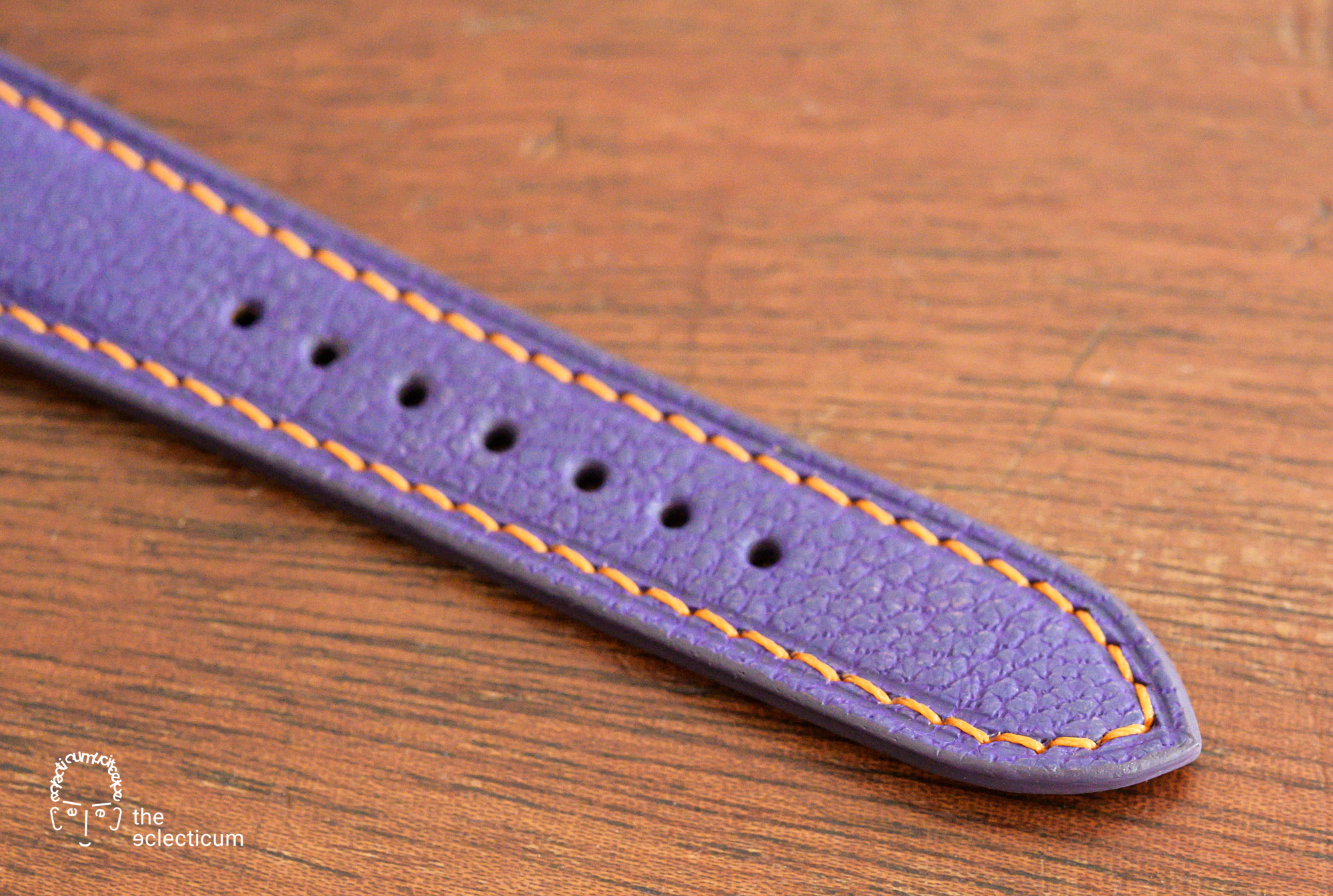




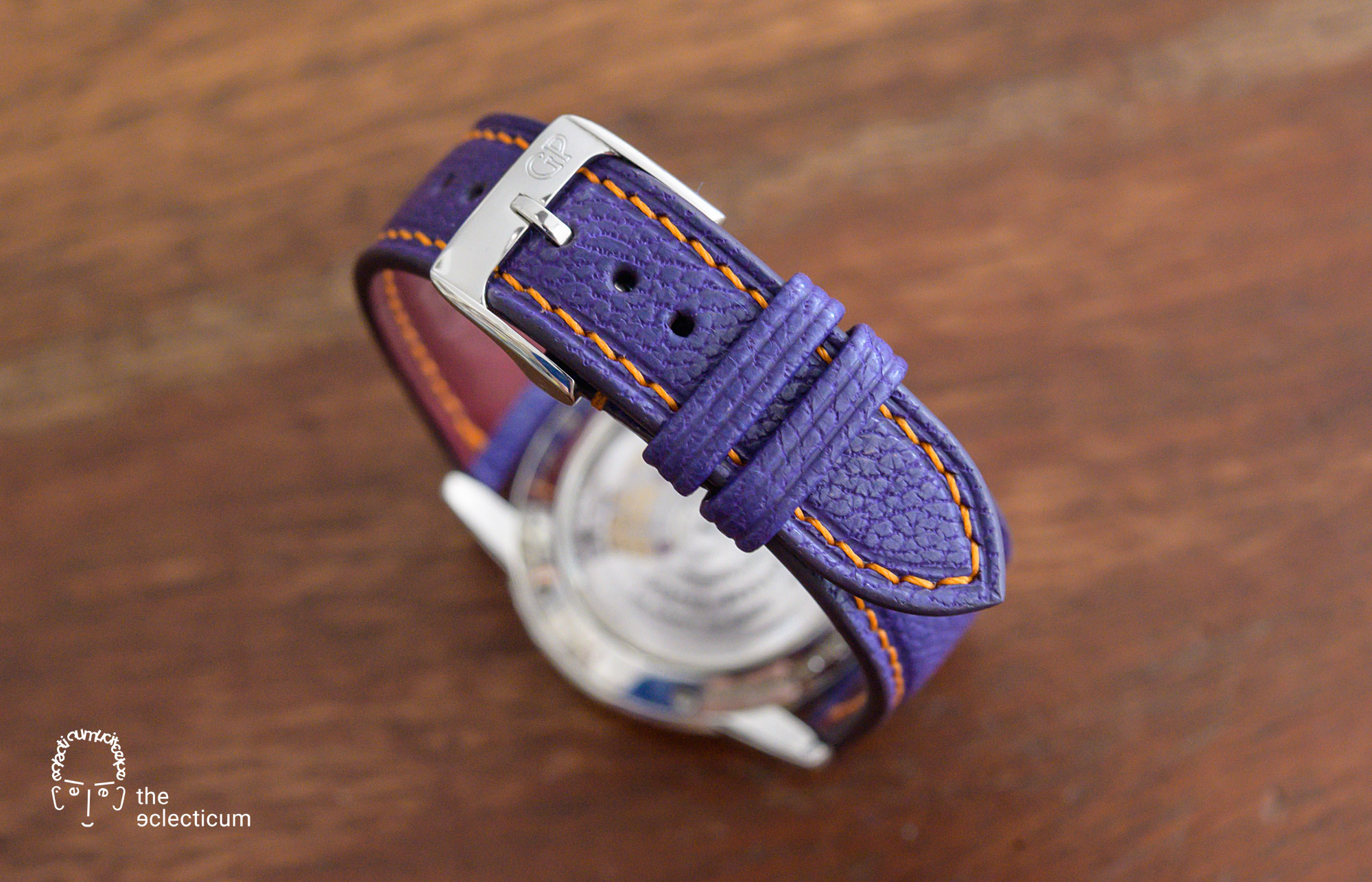
Conclusion
I had a handful of motivations when I started this little strap project: first, I wanted to create a very personal gift – one with a lot of input from myself, one which reflected her personality also, and one that could not be just bought off the shelf.
I wanted a strap which would enhance and not dominate a watch’s personality, yet which in a more subtle way showed attention to the details for those who look closely. 
I also intended to try ‘bespoke’ with a manageable financial input and lead time, as there is a lot that can go wrong: bad measurements, unrealistic expectations, wrong judgements about own preferences (didn’t Steve Jobs once say that ‘people don’t know what they want until you show it to them’?), and finally hiccups with the artisans. At a final price of about € 150 including all shipments and taxes, I wanted to embark on the journey.
There is one thing with fully bespoke, i.e., starting from a blank page just as in this case, which differentiates them from ‘customised’ offerings: with so many aspects of a strap not just being options, but being completely open to discussion, there is a lot of preparatory work on the side of the client: one has to consider a plethora of aspects even with a simple object such as a strap, and a lot more will come during the discussions with the craftspeople. This is a lot more straightforward if you can specify your strap using a customiser as you get an instant visual feedback. In Heima’s case, I had to rely on email exchanges, images, and my own imaginations. 
It is therefore imperative to really contemplate about your preferences beforehand (a fascinating exercise, btw!), expand your experience with straps by trying out a lot, following the ‘strap fetishists’ on social media, etc. Having done that, it needs an artisan who not only has a great aptitude to extract the sometime hidden desires of a client, but one who is also able to translate this into ideas and convey them to the client using words and illustrations. You also need someone who understands use cases well, and warns you if your idea might not be compatible with your desired results. I felt I was in good hands with Heima, and could not be happier with the result.
You might challenge your imagination initially with a custom-made strap by one of the fine manufacturers that offer an online customiser. But as small-luxury-world concluded in his report on his shoe project with ´Il Micio – Hidetaka Fukaya`,
“… the value of passionate spending for us should be more than just to buy something. It´s more like an investment – in your own pleasures and based on your own values!”
Hence, little beats going full into tailored objects with an artisan – go for it!
Ornatus Mundi
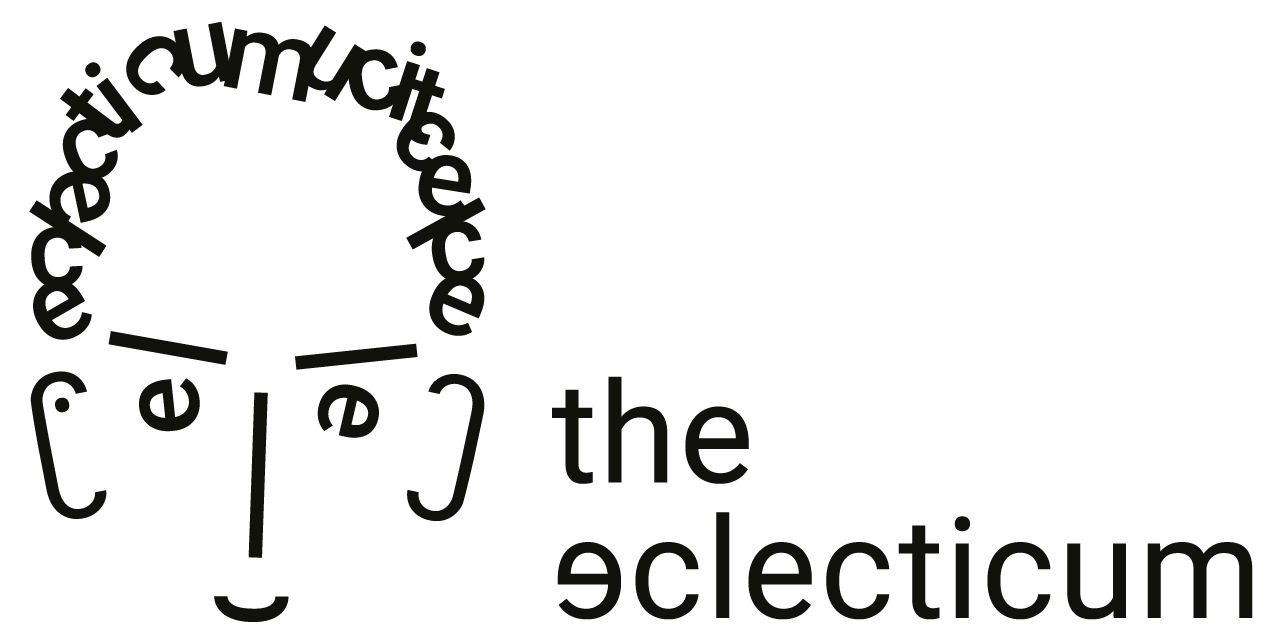

 tEC
tEC
Leave a Reply
Want to join the discussion?Feel free to contribute!